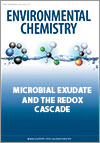EN17133Effect of episodic rainfall on aqueous metal mobility from historical mine sites
Environmental context Episodic extreme rainfall events may affect metal dynamics in rivers flowing within historical metal mining areas. This study provides an analysis of the water chemistry and geochemical processes associated with mobilisation of metals during episodic rainfall events. Findings could be used to assess the environmental quality of streams draining spoil waste areas with similar geochemical conditions, and thereby be used to guide future management strategies.
EN17133 Abstract | EN17133 Full Text | EN17133PDF (704 KB) | EN17133Supplementary Material (2.4 MB) Open Access Article




